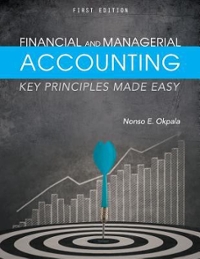
P&G reported earnings per share of $10 in 2019 and paid out 50 percent of these earnings as dividends that year. Assume a beta of 0.80, a risk-free rate of 4.5 percent, and a mature market equity risk premium of (a+b)/2 percent. (where. a 5 and b= Now, we estimated a 3 percent growth rate, in conjunction with earnings and dividends for the next five years, and discounting these dividends back at the cost of equity, we arrive at a cumulative value of $Y per share for the dividends during these five years. SUM YEAR 1 $10 YEAR 2 (1) YEAR 3 (2) YEAR 4 (3) YEAR 5 (4) (5) Earnings per share Payout ratio Dividends per share Cost of equity (6) (7) (8) (9) (10) (11) Present value (12) (13) (14) (15) (16) (17) (i) Complete the table above (5pt) After year 5, we assume that P&G will be in stable growth, growing 3 percent a year (just below the risk-free rate). To go with the lower growth, we assume that the firm would pay out 75 percent of its earnings as dividends and face a slightly higher cost of equity of 8.5 percent. (ii) Obtain the value per share.(5pt) P&G reported earnings per share of $10 in 2019 and paid out 50 percent of these earnings as dividends that year. Assume a beta of 0.80, a risk-free rate of 4.5 percent, and a mature market equity risk premium of (a+b)/2 percent. (where. a 5 and b= Now, we estimated a 3 percent growth rate, in conjunction with earnings and dividends for the next five years, and discounting these dividends back at the cost of equity, we arrive at a cumulative value of $Y per share for the dividends during these five years. SUM YEAR 1 $10 YEAR 2 (1) YEAR 3 (2) YEAR 4 (3) YEAR 5 (4) (5) Earnings per share Payout ratio Dividends per share Cost of equity (6) (7) (8) (9) (10) (11) Present value (12) (13) (14) (15) (16) (17) (i) Complete the table above (5pt) After year 5, we assume that P&G will be in stable growth, growing 3 percent a year (just below the risk-free rate). To go with the lower growth, we assume that the firm would pay out 75 percent of its earnings as dividends and face a slightly higher cost of equity of 8.5 percent. (ii) Obtain the value per share.(5pt)







